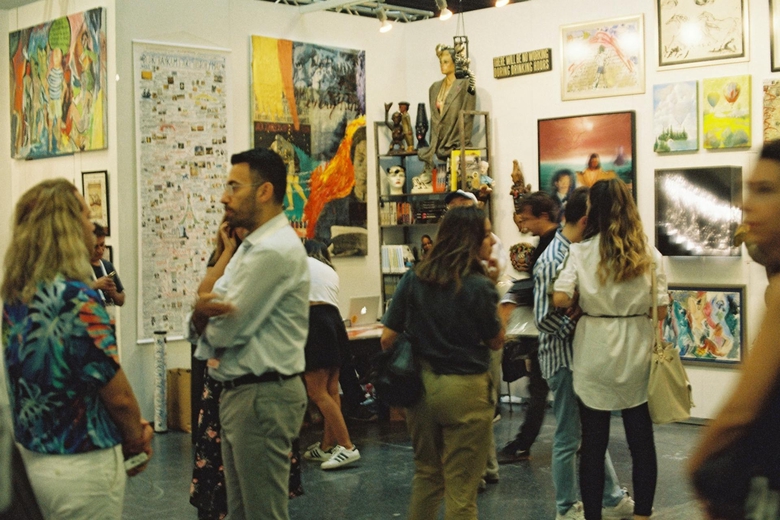As investors seek to diversify their portfolios beyond traditional assets like stocks, bonds, and real estate, artwork has emerged as a compelling alternative. The art market has demonstrated resilience and growth, offering both aesthetic and financial benefits. Investing in art requires a blend of passion, knowledge, and strategic planning. Here's how you can diversify your portfolio with artwork in 2024.

Investing in art can provide both financial returns and personal enjoyment. However, it requires careful consideration and knowledge of the art market. Here are the basics:
Research and Education: Familiarize yourself with art history, different art movements, and current market trends. Attend art fairs, galleries, and auctions to gain insight.
Authentication and Appraisal: Ensure that the artwork you are interested in is authentic and properly appraised to determine its market value.
Storage and Maintenance: Proper storage and maintenance are crucial to preserving the value of your art investment. Control temperature, humidity, and light exposure.
Insurance: Protect your investment by insuring your artwork against damage, theft, or loss.
Types of Art You Can Invest In
The art market is diverse, offering various types of art to suit different tastes and investment strategies:
Paintings: These can range from Old Masters to contemporary works. Paintings often hold significant value and can appreciate over time.
Sculptures: Three-dimensional works of art that can add a unique dimension to your collection.
Photography: Fine art photography is increasingly popular and can be a more affordable entry point into the art market.
Digital Art: With the rise of NFTs (Non-Fungible Tokens), digital art has become a modern investment option. NFTs represent ownership of a unique digital item and are stored on the blockchain.
Prints and Limited Editions: These can be more affordable than original works but still hold value, especially if they are from renowned artists.
How Much Should You Invest in Art?
Determining how much to invest in art depends on your overall financial strategy, risk tolerance, and passion for art:
Start Small: If you're new to art investing, start with a smaller portion of your investment portfolio, perhaps 5-10%. As you gain experience and confidence, you can increase your investment.
Set a Budget: Determine a clear budget based on your financial situation and stick to it. Remember that art investments are typically long-term and can be less liquid than stocks or bonds.
Diversify Within Art: Just as with other investments, diversification within your art collection can mitigate risks. Invest in different types of art and artists.
Strategies for Diversifying with Art
1. Buy Works from Emerging Artists
Investing in emerging artists can offer substantial returns as their reputation and demand for their work grow. This strategy requires keen insight into market trends and potential, but it can be highly rewarding both financially and personally.
2. Mix Blue-Chip and New Artists
Blue-chip artists, like Picasso or Warhol, have a well-established market value and offer stable, long-term returns. Balancing investments in blue-chip artists with works from promising new artists can provide both stability and growth potential.
3. Invest in Different Mediums and Genres
Diversify within the art market by investing in different mediums (paintings, sculptures, digital art) and genres (abstract, realism, street art). Each sector may perform differently under varying market conditions, providing a balanced portfolio.
Where to Invest in Artwork
There are various avenues to explore when investing in art:
Galleries: Established galleries can offer guidance and authentication, making them a reliable source for purchasing art.
Art Fairs: Events like Art Basel, Frieze, and The Armory Show provide opportunities to see a wide range of art and meet artists and gallery owners.
Auctions: Major auction houses like Sotheby's and Christie's are reputable places to buy high-value art. Online auctions can also be a convenient option.
Online Platforms: Websites like Artsy, Saatchi Art, and 1stdibs offer a vast selection of art for sale. Additionally, platforms like Masterworks allow you to invest in shares of high-value artworks.
Art Funds and Fractional Ownership: If purchasing an entire piece of art seems daunting, consider art funds or fractional ownership platforms, which allow you to invest in shares of art.
Investing in artwork can be a rewarding way to diversify your portfolio, offering both financial returns and personal enjoyment. As with any investment, it requires careful planning, research, and ongoing management. By educating yourself, setting a clear budget, choosing the right type of art, and exploring various investment strategies, you can successfully incorporate art into your investment portfolio in 2024. Embrace the blend of passion and prudence to make art a valuable part of your financial strategy.